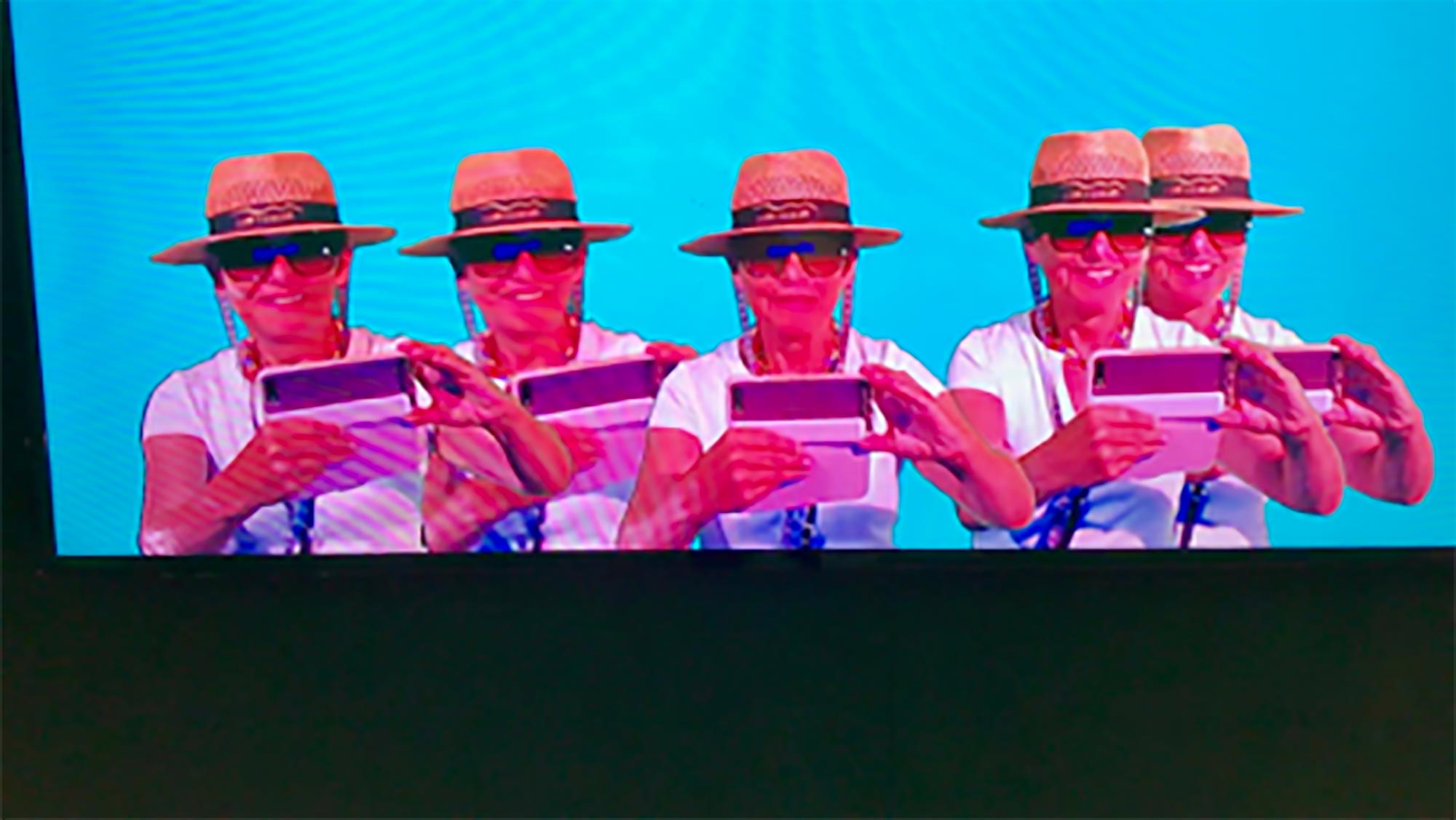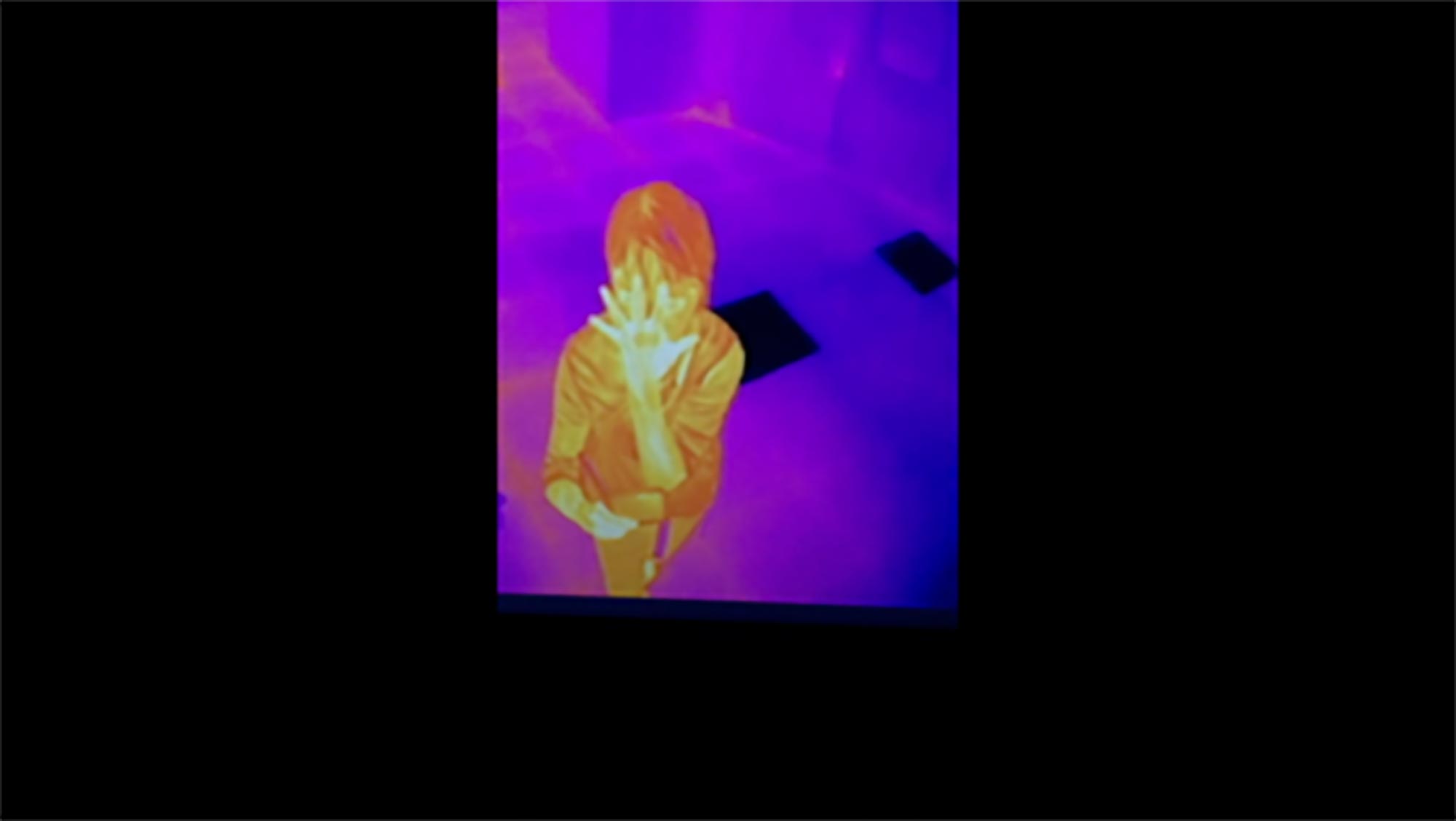- Login
Critical Spatial Practice



‘Cybiog is not the description of an original self or its chrono-teleology, but rather the generation of mutating subjectivities’ (‘Cybiog and sexed digitalia’ Digital Creativity 2003, v. 14, n. 3, pp. 144-151). This plays out as located (i.e. both material place and digital space).
The film shows itself and its maker filming/being filmed in three art locations (two major museums and one independent show), and with two visibly different cameras (iPhone and camcorder). The presence of the hand-held cameras constitutes a material difference from painting, where the technology cannot actually feature in the image; the brush can’t appear in a painting as it paints. There is a kind of infinite recession at the interface of all the constituent elements, especially when the film is played in a gallery and on a loop without the titles. ‘The move is from a model of reflection to one of diffraction; it is the ability to actualise the ideas of “self” and “portrait” dynamically and ex-centrically that is new. Hypermedia embodies a new way of articulating how the surface of the body is conceived as relation to its interior, to the senses and to the mind.’ (‘Cybiog and sexed digitalia’, p. 145) In the same essay, I link this with a shift from the fetishistic self to the prosthetic, starting from the Freudian sense in which the fetishist can only be male in a manner continuous with his understanding of the self. ‘The pre-digital self-portrait was an object and entailed the splitting that is inherent in mirror-theories of the self’ (‘Cybiog and sexed digitalia’, p. 147). I summarise these interfaces as ‘topological’. The moving image writes, and having writ, shifts dimension.
I am Professor Emerita at The Slade School of Fine Art, UCL. An interdisciplinarian working between digital language art, poetry, film, feminism, my international publications focus on the multivalent relations between forms of art and poetry. I have supervised over 25 practice based PhDs on art and writing and am a member of the Newlyn Society of Artists. I have also been privileged to join Jane Rendell in teaching students of the Critical Spatial Practice: Site-Writing module, bringing together practice-based PhD students from The Slade and the Bartlett. I hope that my latest book Thinking the Sculpture Garden (Routledge 2020) will be thought as site-writing.
I do not differentiate clearly between practice and thought. A differential exists, but the exact moment of transition is as unknowable as the moment of coalescence into form: awareness here is retrospective. Boundaries have their uses, but they are ultimately restrictive, especially when elevated to principles. So writing may evolve into painting, film, and so forth. These factors define for me Jane Rendell’s understanding of “site-specificity” within site-writing, which isn’t a matter of inter/cross-disciplinarity, but a rather generously expansive mode of exploration that enables both freedom and structure, because it is its own site, yet it is interconnected.
Maya Deren Meshes of the Afternoon (1943, 18 mins).
Sally Potter’s Thriller (1979, 34 mins).
Jean Cocteau Orphée (1950, Ihr 52mins).



































































